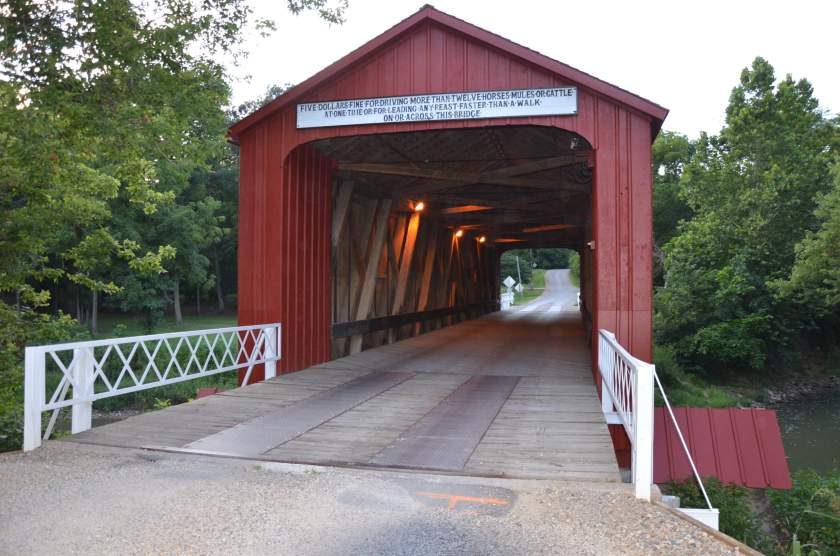
I live in a town that has two covered bridges – one that’s old and one that’s new. I really enjoy these historic structures, so I look for covered bridges in other communities as I travel around. Each one is unique, and it’s interesting to see all the different examples.
There’s a variety of stories on why a covered bridge was originally built. Some say that horses and cattle did not like crossing an open bridge where they could see and hear rushing water. The bridges were covered, and entrances were made to look like a barn. The horses and livestock were then more willing to enter and make the crossing.
But most agree that the real reason for a covered bridge was to protect the structure from the ravages of weather. They have an elaborate wooden truss system that deteriorates rapidly if exposed to rain, wind, and sun. Compare the life span of an open bridge – about ten years – to that of a covered bridge – at least ten times longer.
The secret to a covered bridge is the truss system, which carries the weight. There’s several variations on this basic style of support. Some are named for the person who designed the system.

The Captain Swift Bridge in Princeton Illinois incorporates the Burr arch design. This truss system was invented by Theodore Burr and patented in 1817. The design uses a long arch on each side. While this bridge looks old, it was built in 2006.
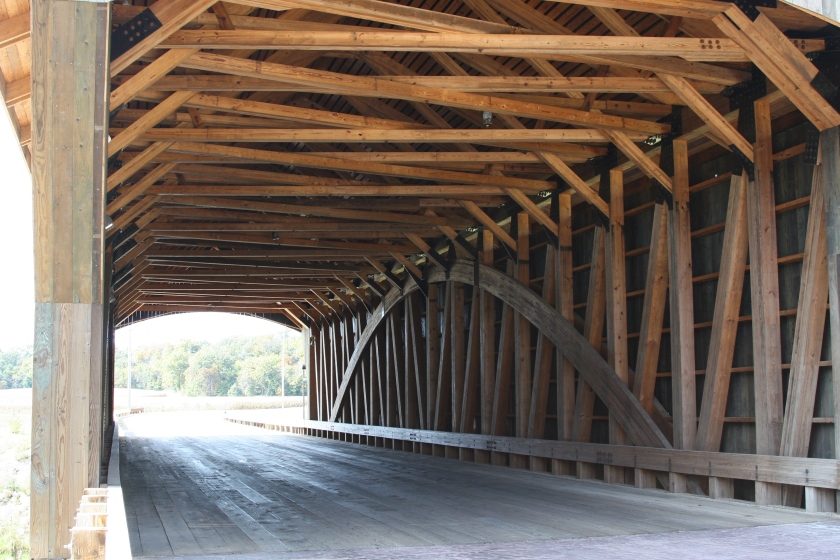
A few other bridges to visit . . .
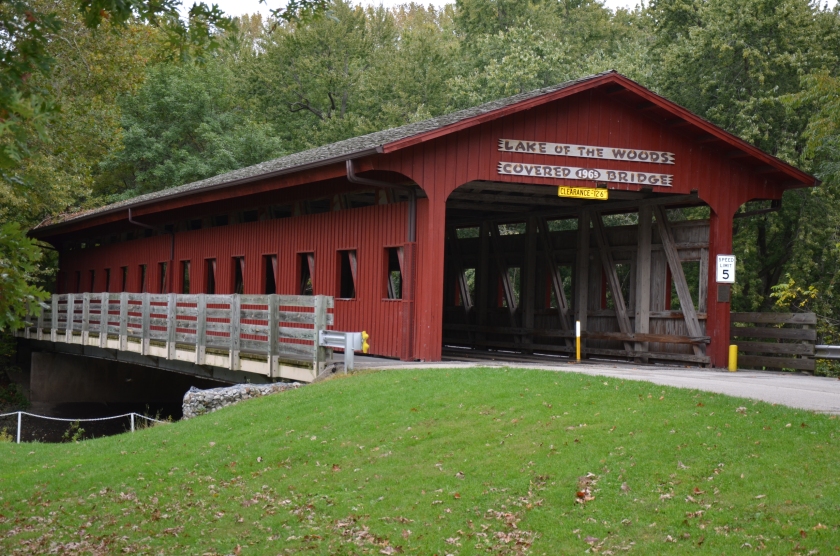
Lake of the Woods (1965) covered bridge is in Mahomet, Illinois, in south central Illinois. I like the retro-looking sign over the entrance.
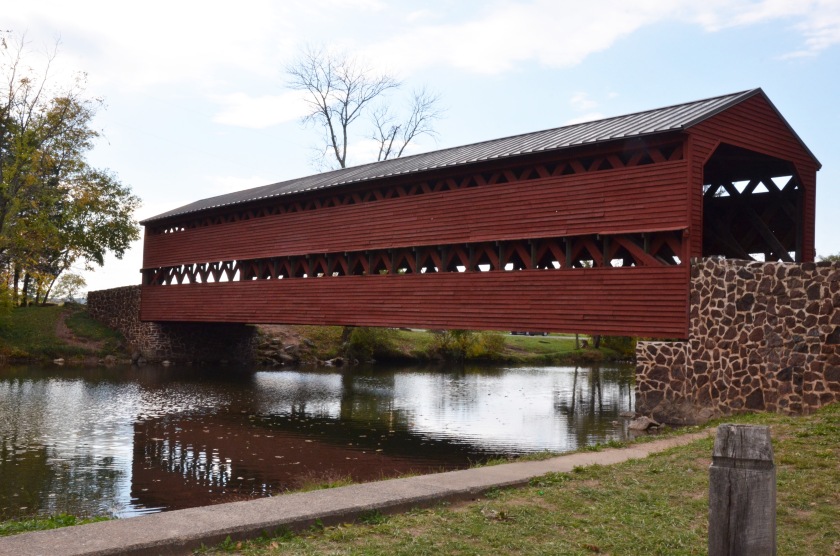
Sachs Covered Bridge (1852) Located in Gettysburg, Pennsylvania, the Sachs bridge was used by both Union and Confederate troops during the battle of Gettysburg in 1863.
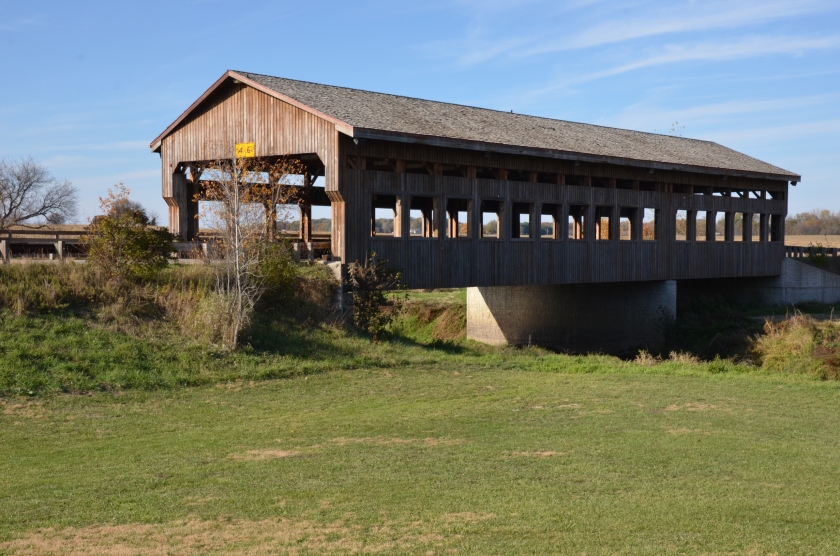
Morrison Covered Bridge (2001) is new construction. It was built over Rock Creek in northwest Illinois.

Wolf Bridge (1999) is an historic reproduction. The original Wolf bridge was built in 1840 as an open bridge, and covered in 1874. It was burned in 1994 by arsonists, but rebuilt and reopened in 1999. The new Wolf Bridge is taller and wider than the original to better accommodate modern traffic. It’s in Knox County, Illinois, near Galesburg.
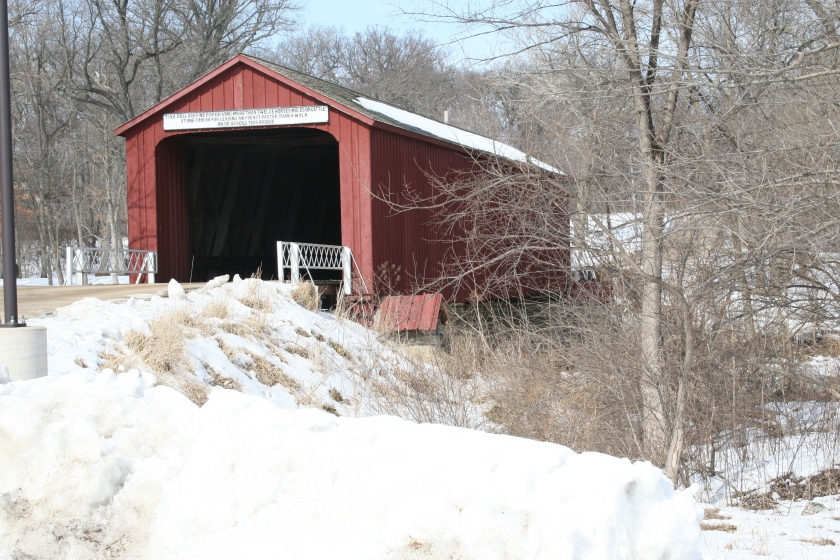
Covered bridges are attractive in the winter months, too. And here’s an interesting bit of history: when sleighs were the mode of winter transportation, snow had to be shoveled on to the bridge floor to make a snowy surface for the sled runners.

Some of today’s covered bridges still have the original “warning” signs posted above the entrances. Why was that necessary? Experts say the pounding rhythm of horses’ hooves, trotting in step, could cause stress and structural damage to the bridge. For that same reason, Civil War soldiers were required to break cadence when crossing through a covered bridge.

Henderson County Covered Bridge (1866) is in Oquawka, Illinois. Today it’s pedestrian only.
Covered bridges are wonderful reminders of by-gone days. If you find one in your travels, be sure to admire the craftsmanship inside as well as the structure and setting outside. Hats off to our ancestors for their ingenuity!

Fascinating details about covered bridges. Nice little history lesson “first period” in the morning — painless and pretty, too! Thanks, Pam.